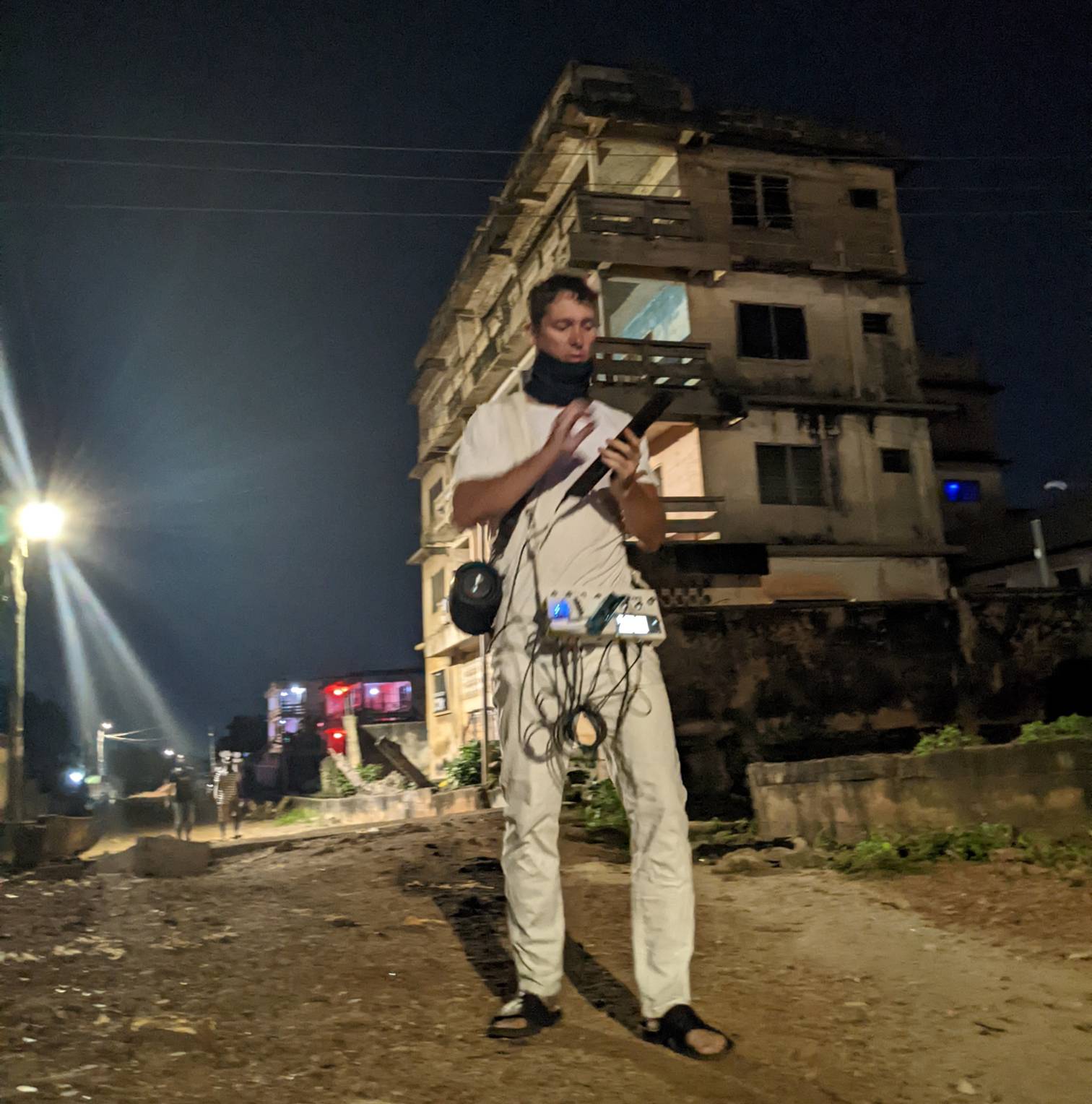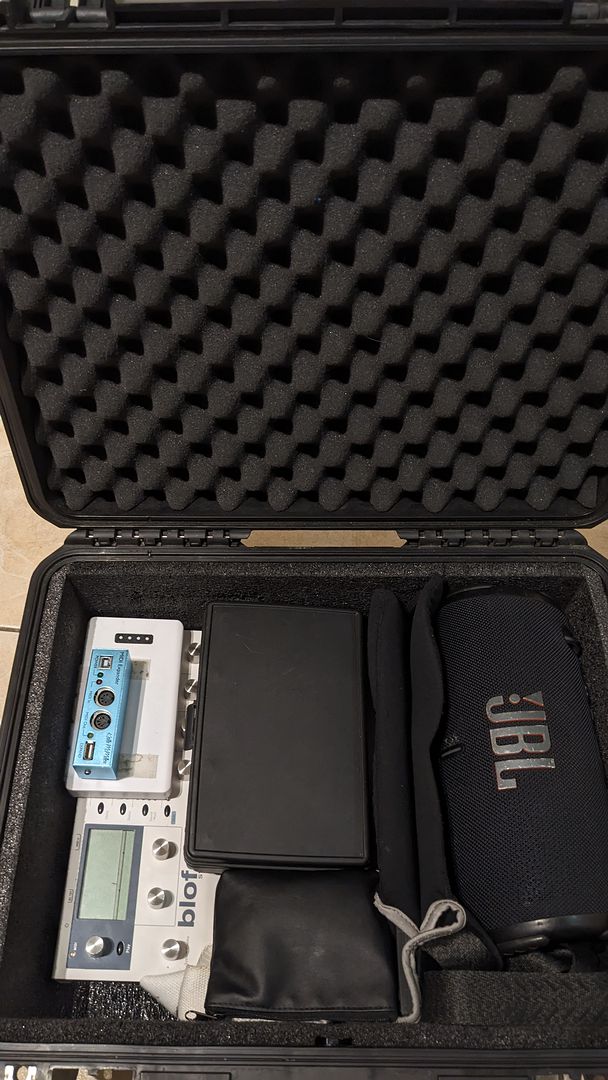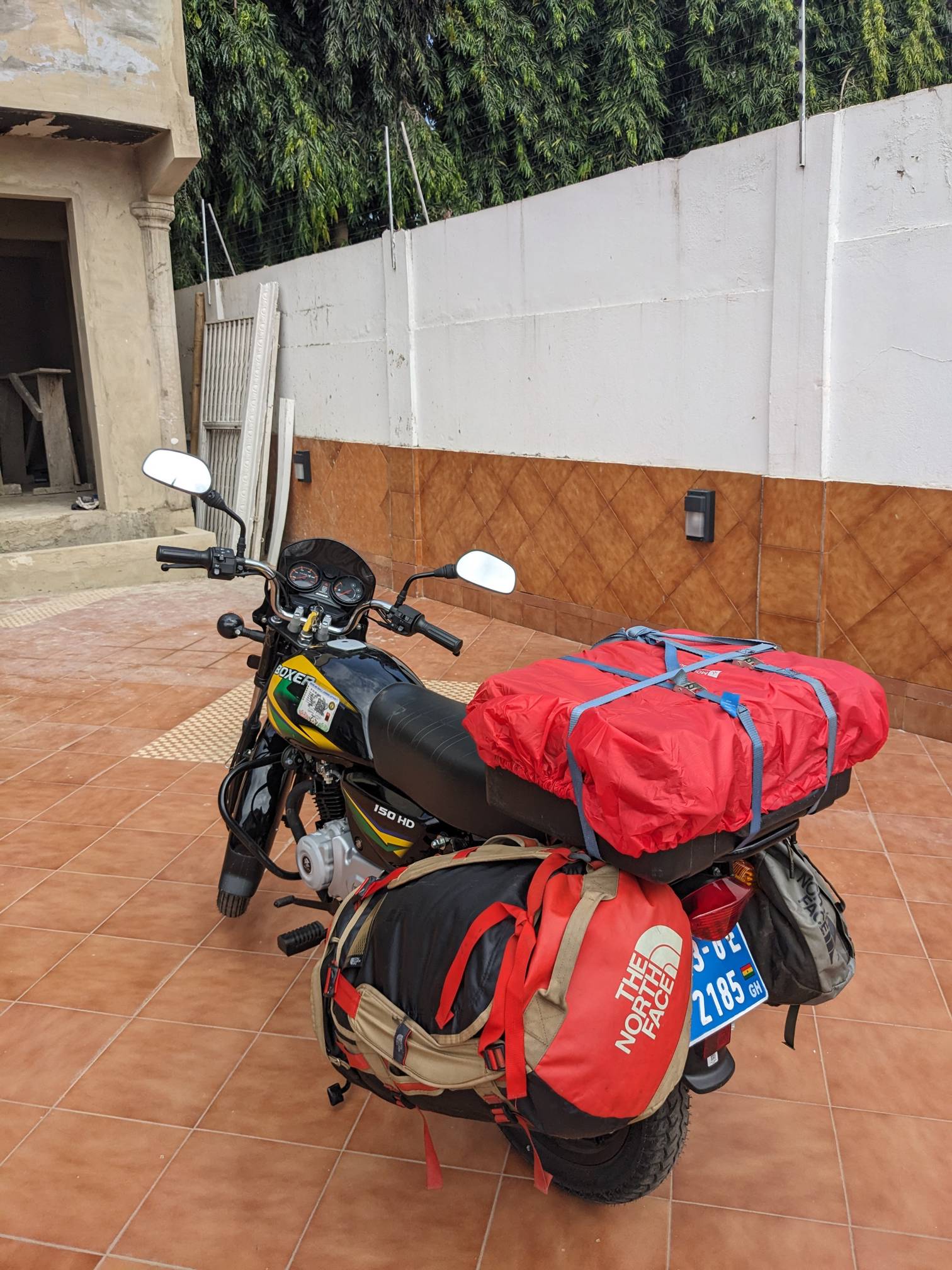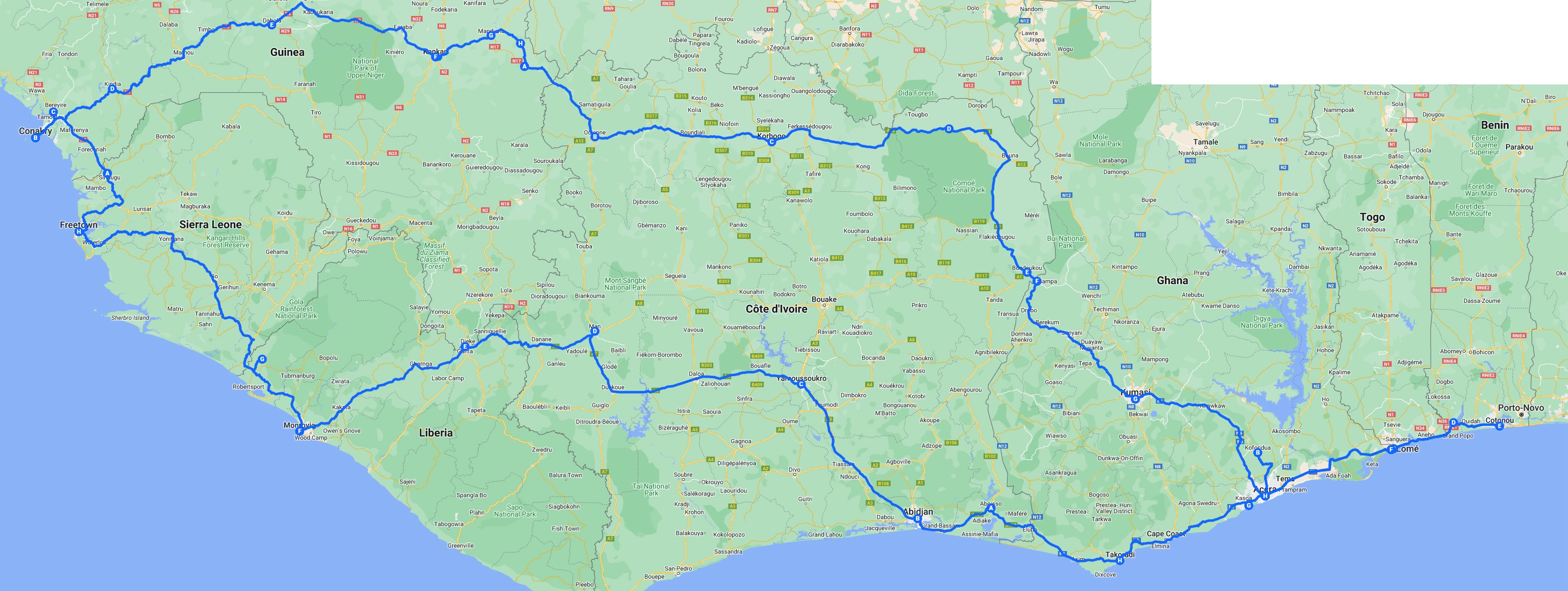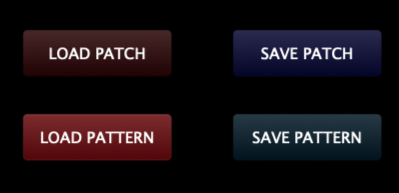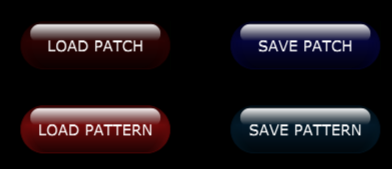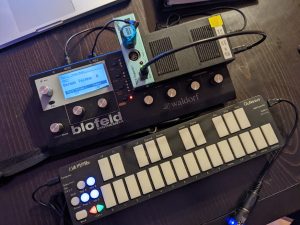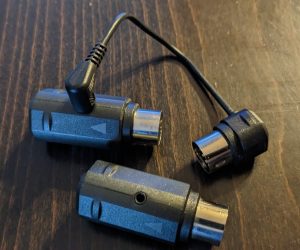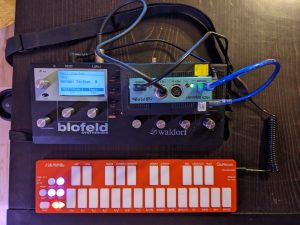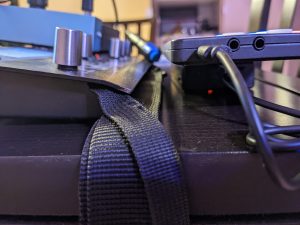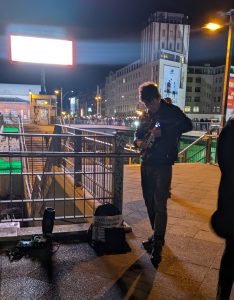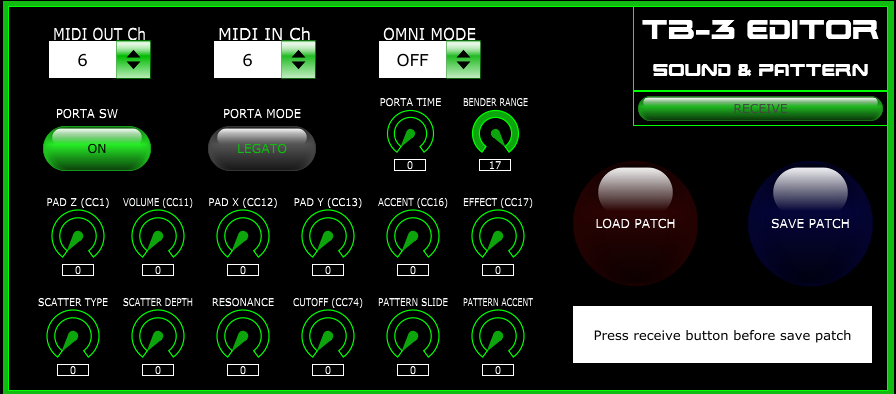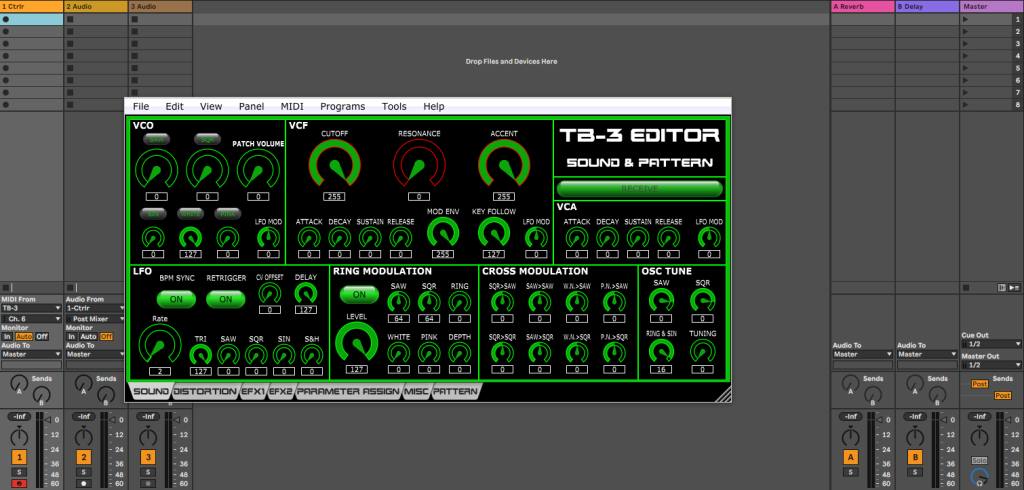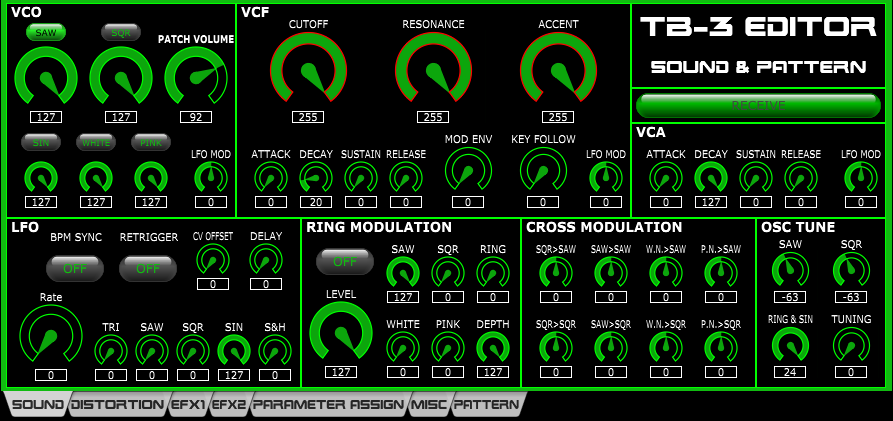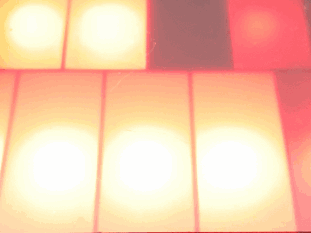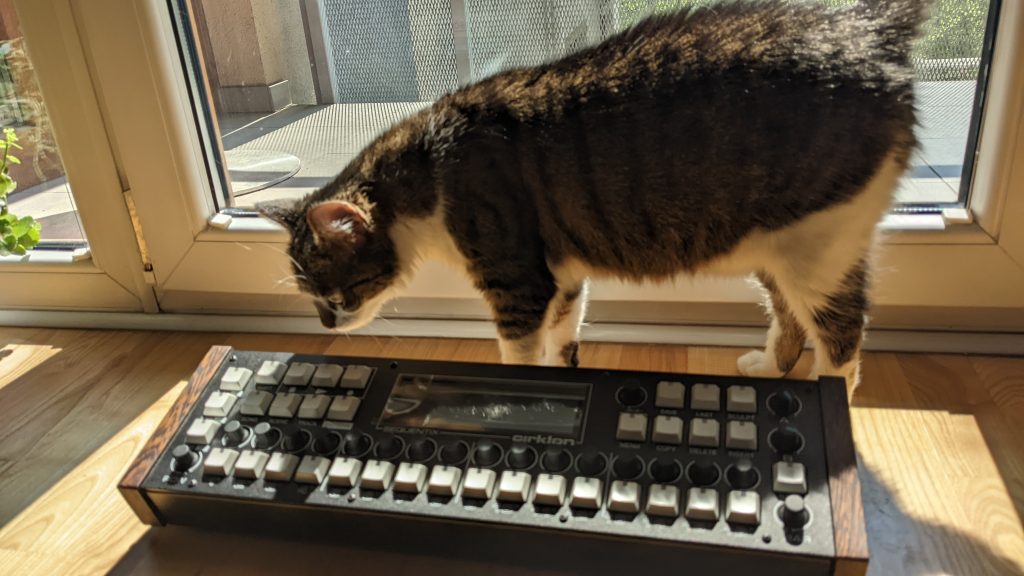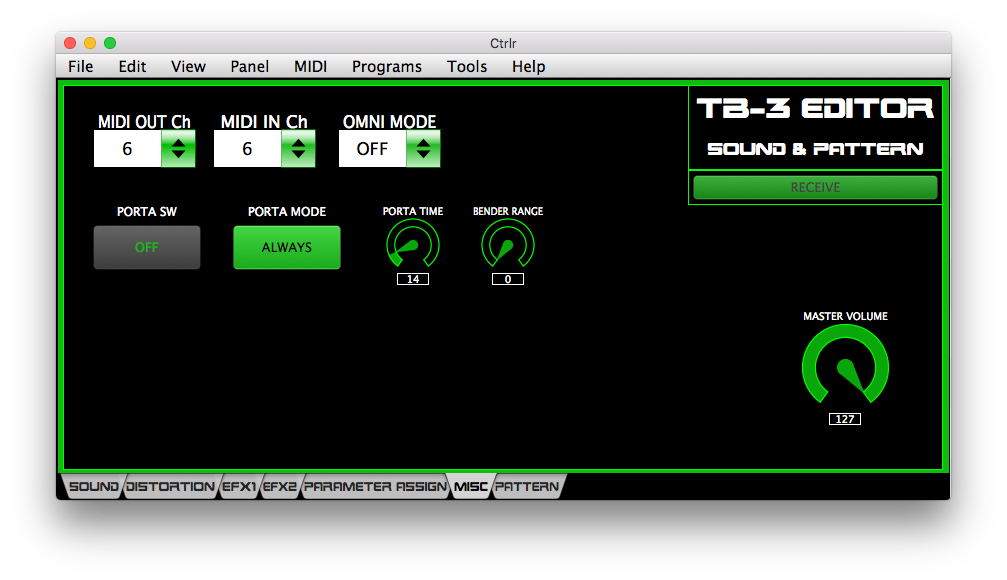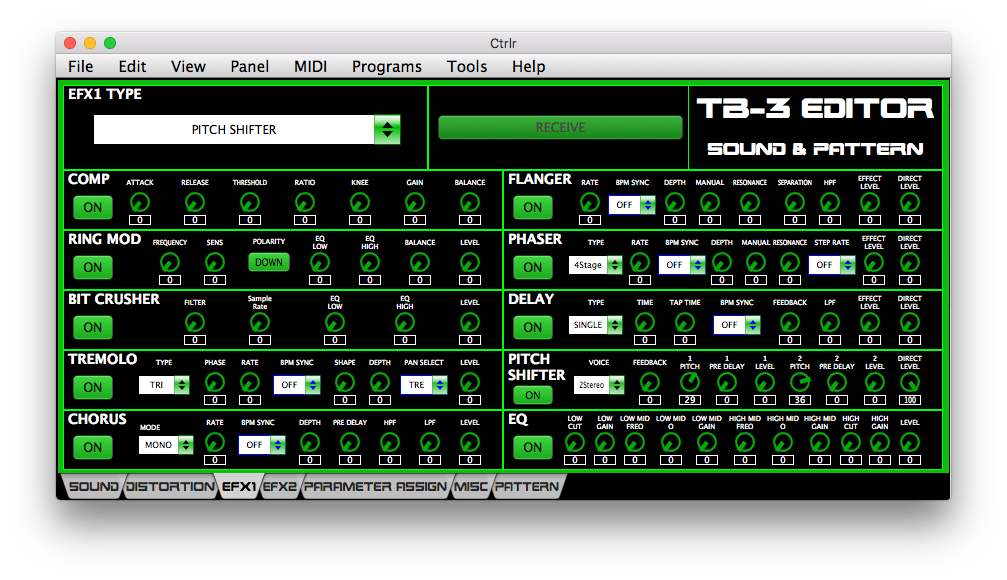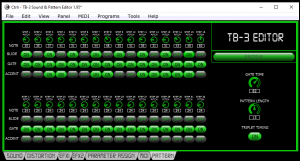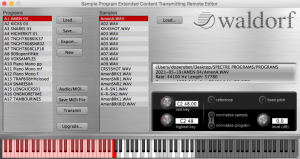An Adventure of a Lifetime in West Africa
Taking the Show on the Road
The West Africa tour was a great success. Seven countries, 7000km, and many unforgettable experiences. On this trip, I took the new white Blofeld with me, but unfortunately, I had to go back to the tried-and-true wired connection because the midi dongle on the KMI QuNexus broke and I couldn’t order new ones in time. This time, I also had my Tascam DR-10L to record so that even if the video audio wasn’t good, I still had a good recording of the performance that I could go back and sync later. There were many issues that had to be dealt with during the tour, but ultimately there were no showstoppers and everything went off very well. There were no major injuries, the bike worked more or less the entire time without an issue, and nobody got any sicker than what could be expected when you travel to different places and eat local food. At some point I’ll document it like I did the 2018-2019 South America tour but that is a pretty long process. I am putting up videos on my youtube channel and titkok so go to doperobot.com and click on the links there.
Travel Notes
See the travel case I used on the left, pictured with the red cover on the bike on the right. I packed the synth, controller,speaker, sign, tip box, recorder, and cables into here and only kept music stuff in it. It’s quite durable and it locks with master locks so it was safe from the elements but easy to get at and open on a moment’s notice. One key to this or any type of street performance is using a system that doesn’t break down and which has parts that can be replaced. At about week 3, the cable I used to connect from the controller broke, but I did have. backup that worked but was much longer and required cable management. I found one of those in Monrovia eventually but luckily I was prepared with a spare. It turned out that it didn’t make any sense to put out a tip box in almost anywhere I went, so I quickly abandoned that idea, especially after someone tried to steal my tips in Accra.
Waldorf Blofeld
The new white Blofeld (which I bought as a backup to the black one that went to South America) performed like a champ and looked great doing it. When I got home I ordered more adapters for the controller so I can go back to wireless operation. It’s funny though, when I just lay the synth down nearby and just play the controller, my tips aren’t as good as when I wear the synth, so I’ll probably continue to do that regularly.
Moto Adventure
The moto adventure itself was crazy, from paying bribes to having guns pulled on us, from driving rain and mud to barely
passable roads and corrupt officials, this trip had everything. But having this aspect of playing live in the streets really ups the ante and sharing electronic music with people around the world is all I really want to do. Super happy to have been able to complete the very physical moto driving part without any injuries to me or my companion as well. If by some miracle I can afford it in the next few years, the next one will be touring Australia!
Stats
Countries: Ghana, Togo, Benin, Cote d’Ivoire, Sierra Leone, Liberia, Guinea
Distance: 7000km
Motorbike: 2023 Bajaj Boxer 150HD
Time: 6 weeks
